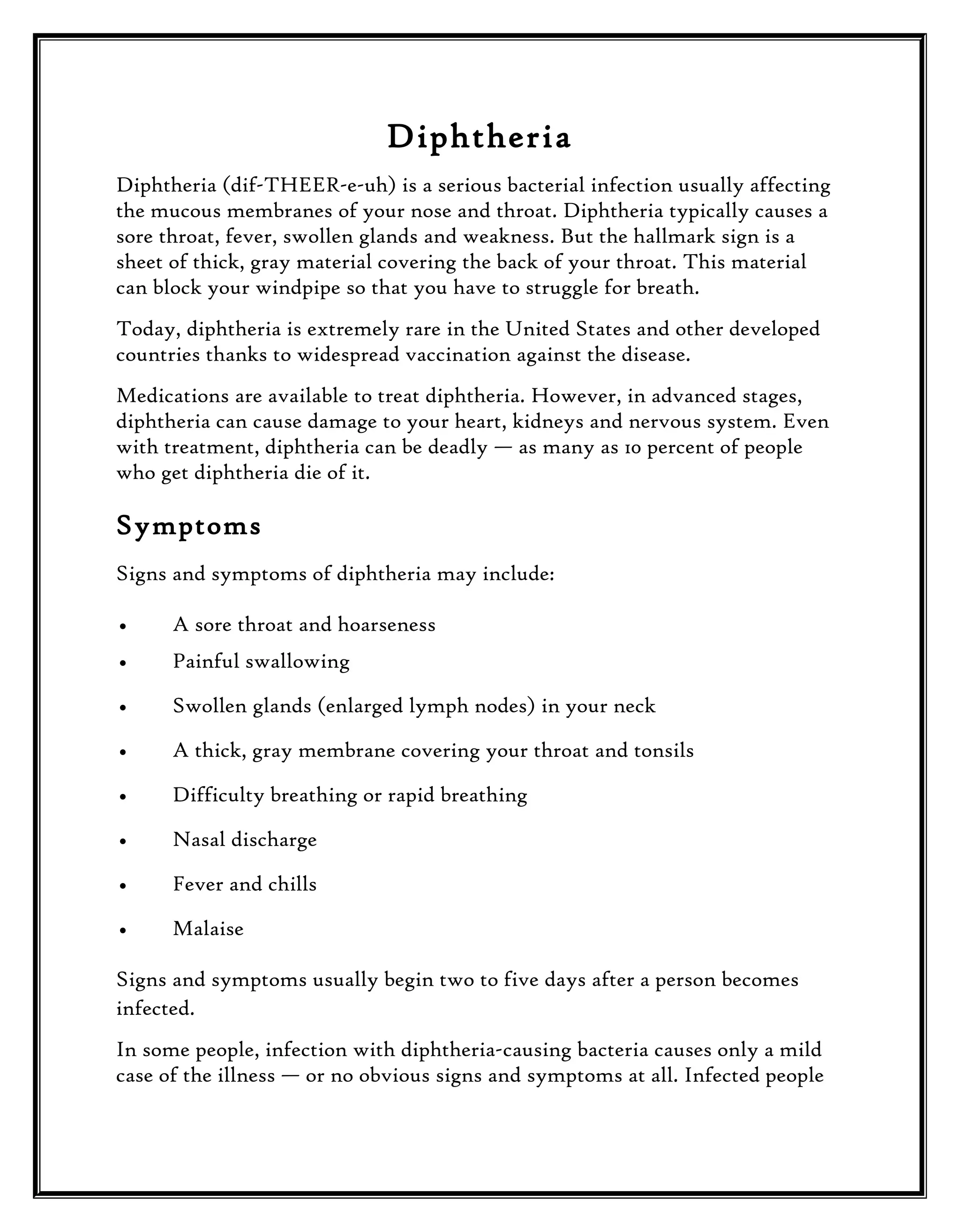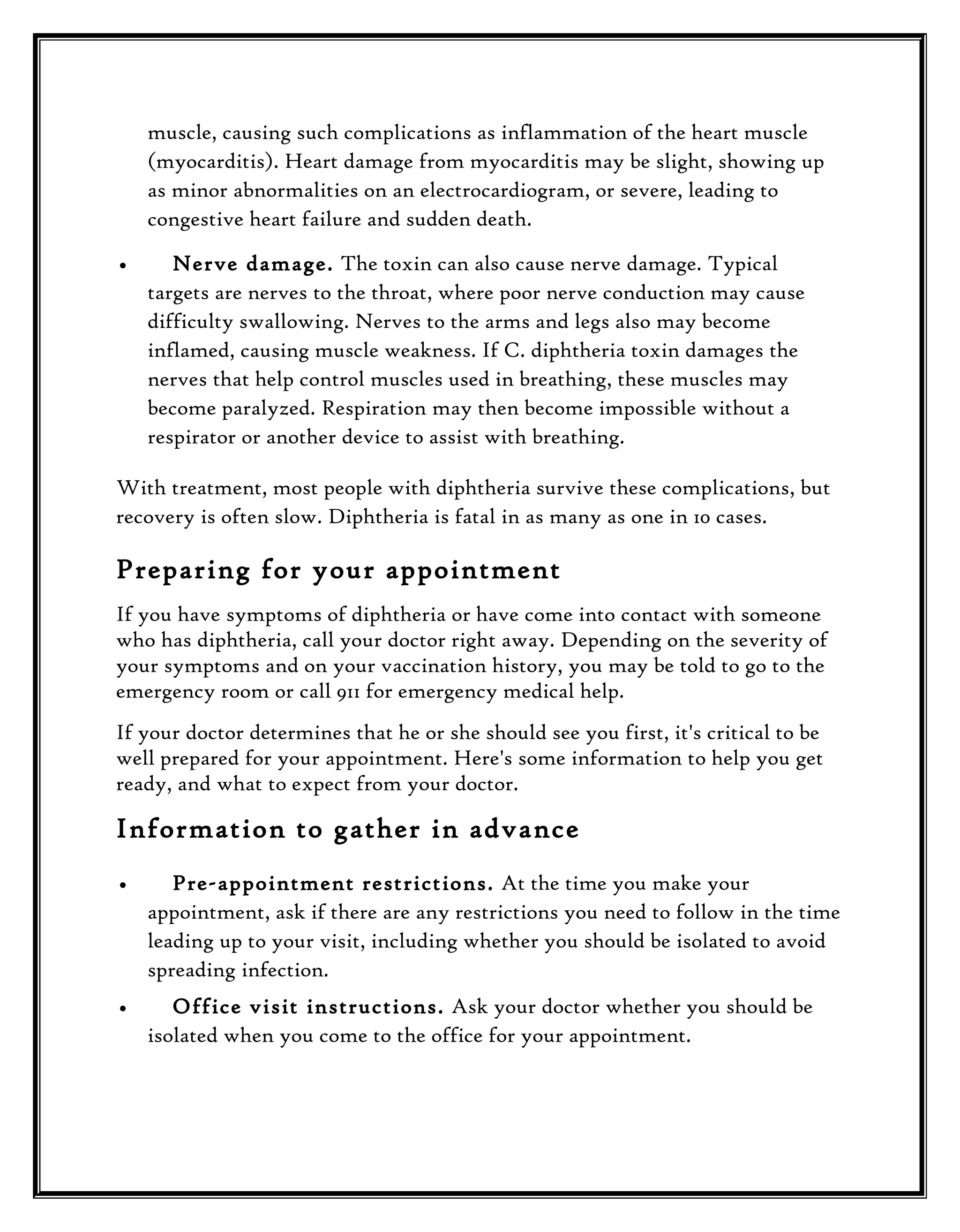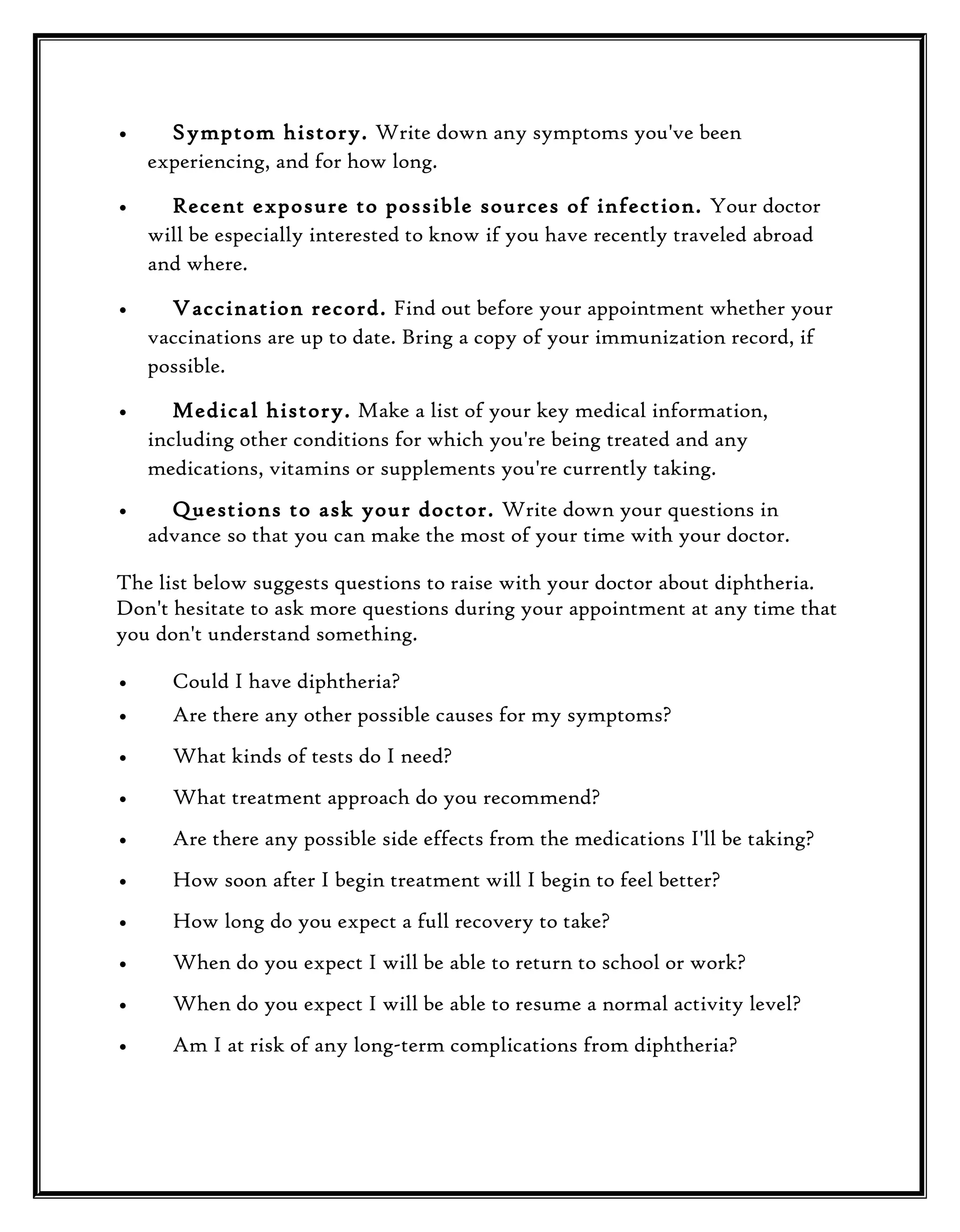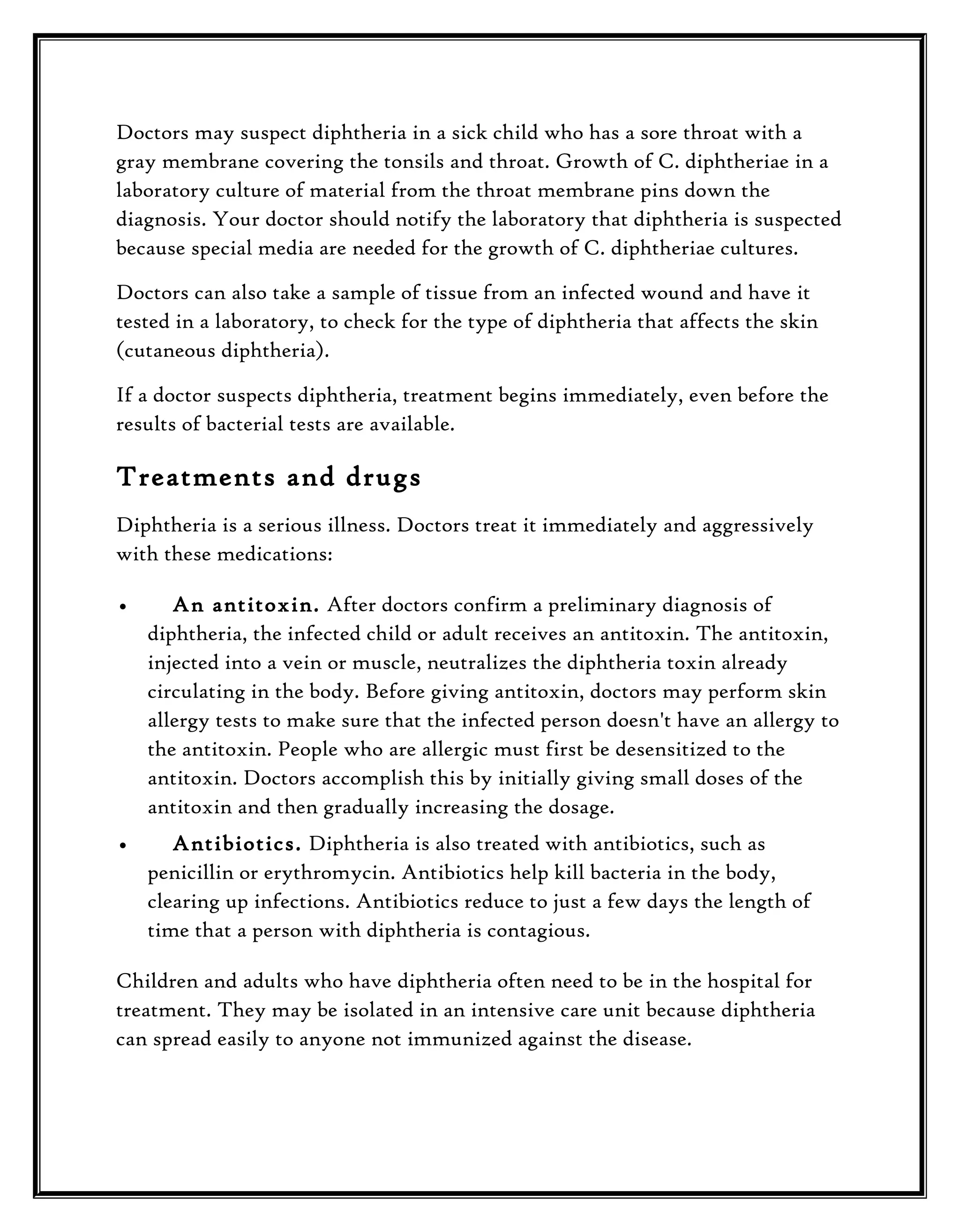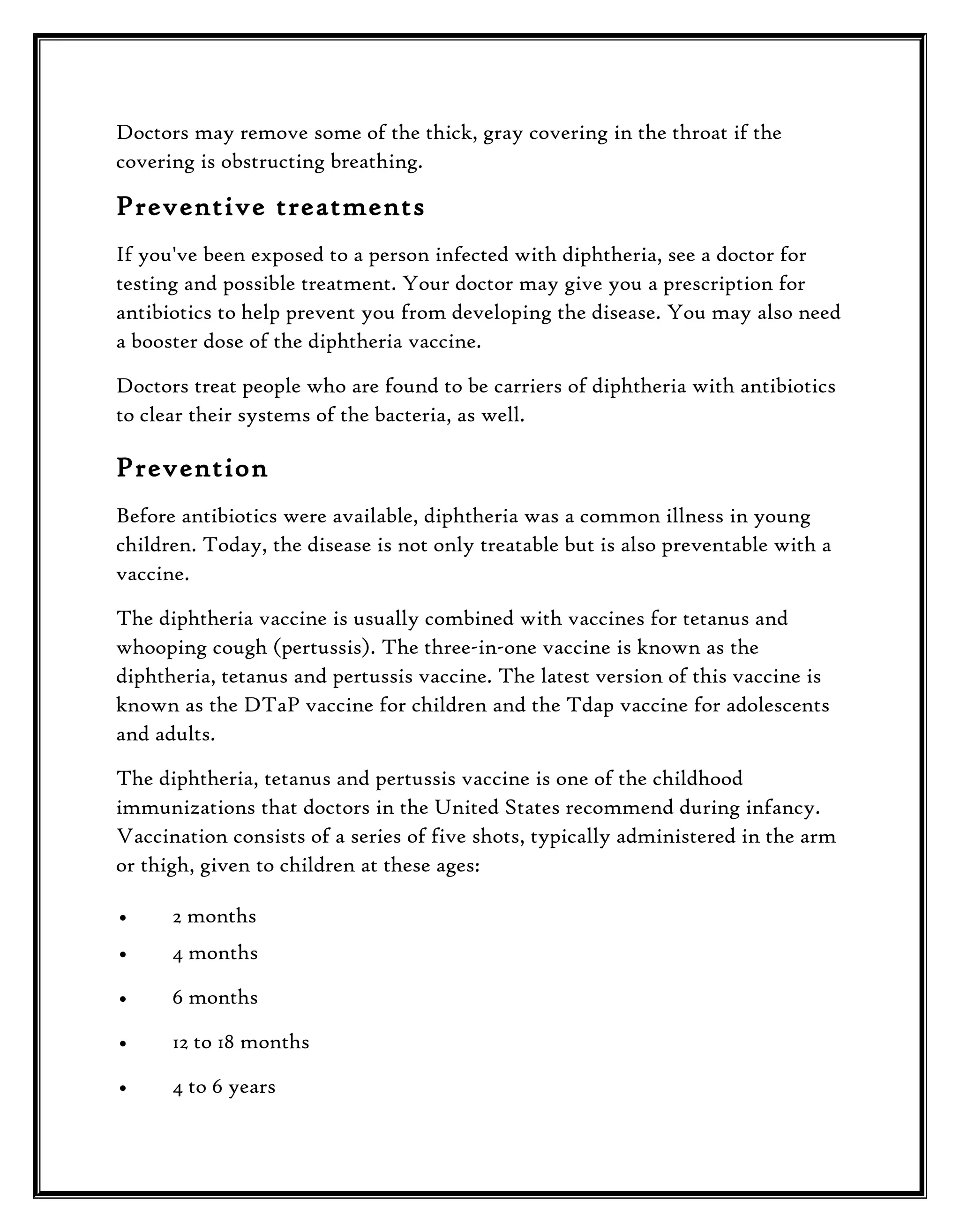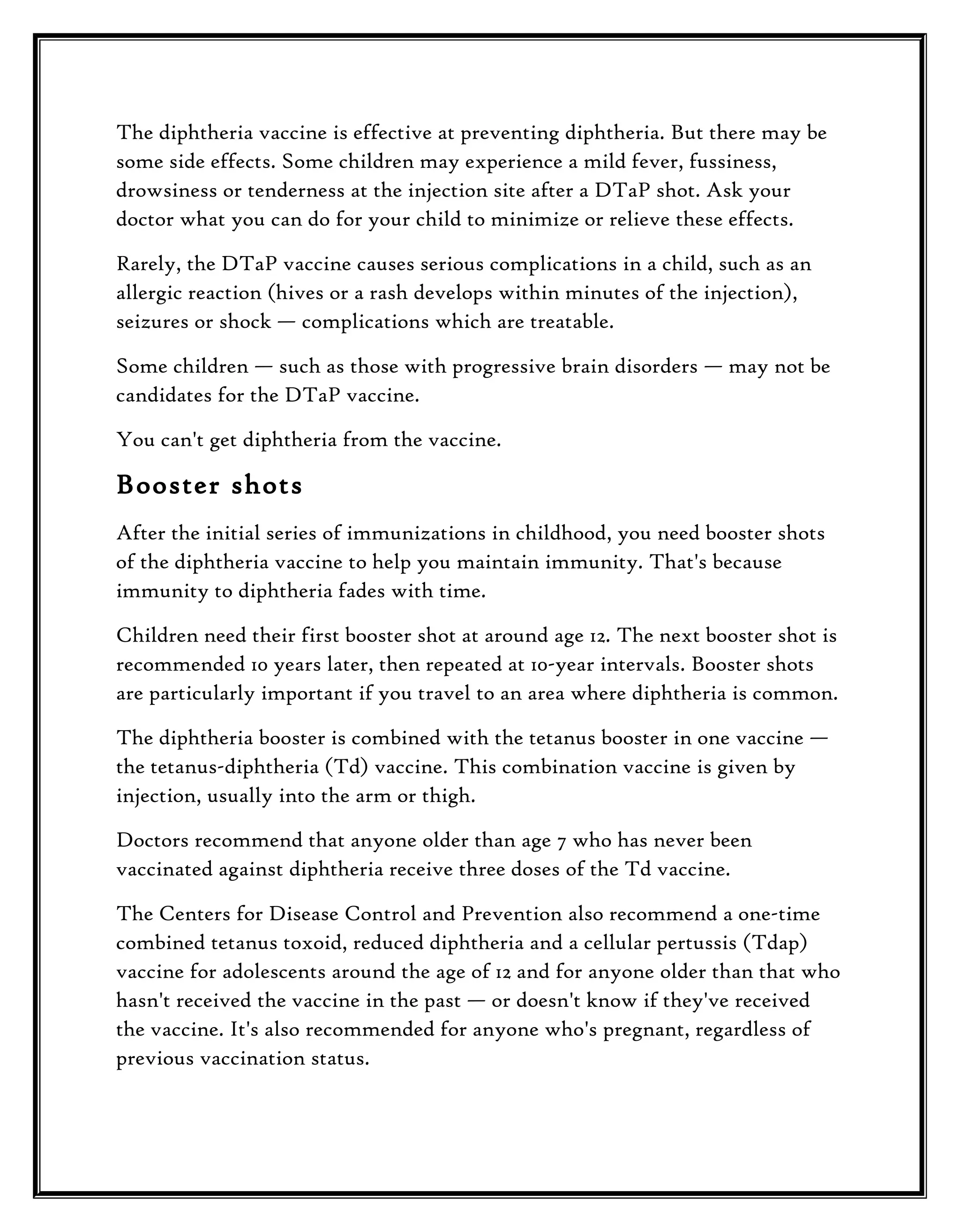Diphtheria is a serious bacterial infection of the throat and respiratory system caused by Corynebacterium diphtheriae. Symptoms include sore throat, fever, swollen glands, and a gray membrane in the throat that can cause breathing difficulties. Without treatment, diphtheria can damage the heart, kidneys and nervous system, and it is fatal in 10% of cases. Today, diphtheria is rare in developed countries due to widespread vaccination programs. Vaccination is the most effective way to prevent diphtheria.
